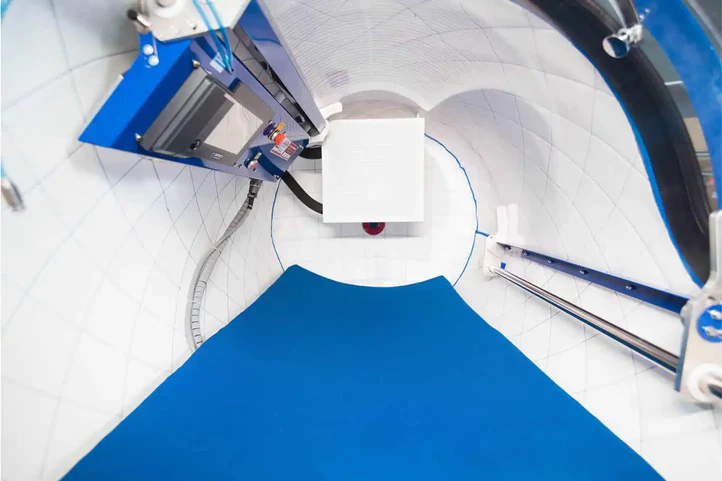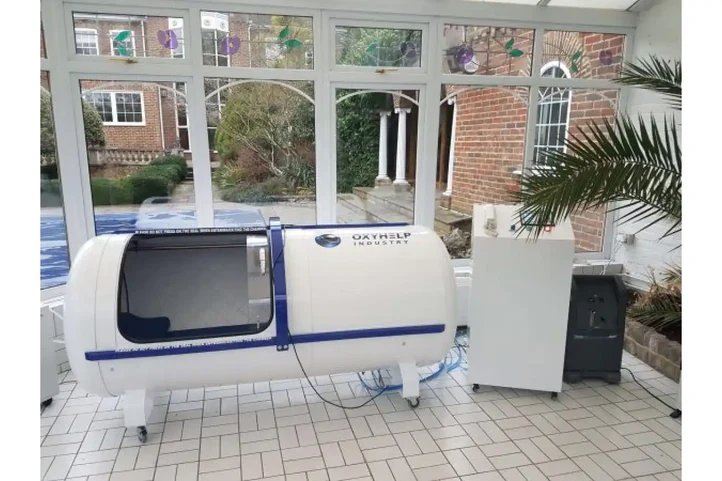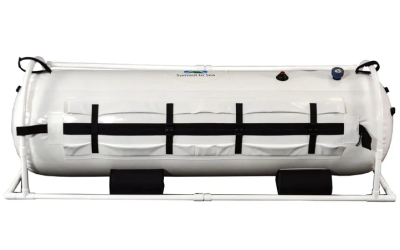Hyperbaric chambers are a unique and potentially life-saving medical treatment that involves breathing 100% pure oxygen in a pressurized environment. While this therapy can have numerous benefits for various medical conditions, there are risks associated with staying in a hyperbaric chamber for too long. This article will explore the potential consequences of prolonged exposure to high oxygen and pressure levels in a hyperbaric chamber.
One of the main dangers of staying in a hyperbaric chamber for an extended period is oxygen toxicity. When breathing pure oxygen at high pressures, the body can become overloaded with oxygen molecules, leading to nausea, dizziness, seizures, and even respiratory failure. In severe cases, oxygen toxicity can be life-threatening.
How does hyperbaric oxygen therapy work?
Hyperbaric oxygen therapy increases the amount of oxygen delivered to the body’s tissues and organs. When a person enters a hyperbaric chamber such as a summit to sea hyperbaric and breathes in 100% pure oxygen at increased pressure levels, the oxygen dissolves into the bloodstream at a much higher concentration than what is possible with normal air. This allows greater amounts of oxygen to reach areas of the body experiencing reduced blood flow or inflammation, promoting healing and reducing the risk of infection.
However, while hyperbaric oxygen therapy can be highly beneficial when used appropriately, guidelines exist to prevent the risks associated with excessive oxygen exposure. Typically, treatments in a hyperbaric chamber last for around 90 minutes at a time, with multiple sessions scheduled over days or weeks.

Explanation of the process and benefits of receiving high concentrations of oxygen under pressure
Hyperbaric oxygen therapy involves breathing in 100% pure oxygen at increased pressure levels inside a summit to sea hyperbaric chamber. This process allows more oxygen to dissolve into the bloodstream, reaching areas of the body with limited blood flow or inflammation. The increased oxygen levels help to promote healing, reduce swelling, and improve overall tissue function.
One of the main benefits of receiving high oxygen concentrations under pressure in a hyperbaric chamber is improved wound healing. The increased oxygen levels help stimulate the growth of new blood vessels and promote the formation of collagen, an essential component of the healing process. This can be particularly beneficial for individuals with chronic wounds, diabetic ulcers, or radiation injuries.
In addition, hyperbaric oxygen therapy can also help to reduce inflammation and fight off infection. By delivering high levels of oxygen to the body’s tissues, the immune system can better fight off bacteria and viruses, ultimately aiding in healing. This can be especially helpful for recovering from surgery or compromised immune systems.
Potential Risks of Hyperbaric Oxygen Therapy
While hyperbaric oxygen therapy can offer numerous benefits, there are also potential risks associated with this treatment. One of the main risks is oxygen toxicity, which can occur when a person is exposed to high oxygen levels for an extended period. Symptoms of oxygen toxicity may include nausea, dizziness, seizures, and respiratory failure. It is important for healthcare providers to closely monitor patients during hyperbaric oxygen therapy to ensure that they are not experiencing any adverse effects.
Another risk of hyperbaric oxygen therapy is barotrauma, which can occur when the pressure inside the hyperbaric chamber changes too quickly. This can damage the ears or sinuses, resulting in ear pain, dizziness, or nosebleeds. To minimize the risk of barotrauma, patients are instructed to equalize pressure in their ears and sinuses regularly during the treatment.
Carbon Monoxide Poisoning
Carbon monoxide poisoning is another condition that can be effectively treated with hyperbaric oxygen therapy. Carbon monoxide is a colorless, odorless gas produced by the incomplete burning of carbon-based fuels such as gasoline, natural gas, or wood. When inhaled, carbon monoxide binds to hemoglobin in the blood, preventing oxygen from being carried to tissues and organs.
Hyperbaric oxygen therapy can help displace carbon monoxide from hemoglobin and increase the amount of oxygen in the bloodstream, ultimately helping to alleviate symptoms of carbon monoxide poisoning. This treatment is typically administered at higher pressure levels and longer than standard sessions.
Risk of carbon monoxide poisoning in a hyperbaric chamber
While hyperbaric oxygen therapy is generally safe and effective, there is a potential risk of carbon monoxide poisoning when receiving treatment in a hyperbaric chamber. Carbon monoxide poisoning can occur if there are leaks or malfunctions in the hyperbaric chamber’s ventilation system, leading to the buildup of carbon monoxide gas.
Effects on Atmospheric Pressure
When people enter a hyperbaric chamber, they are exposed to increased atmospheric pressure, which can affect the body. The higher pressure in the chamber can cause changes in the lungs and ears and affect circulation and blood flow.
One common effect of increased atmospheric pressure is barotrauma, which occurs when there is a difference in pressure between the inside of the body and the surrounding environment. If not properly equalized, this can damage the ears, sinuses, or lungs. Symptoms of barotrauma may include ear pain, dizziness, or nosebleeds.
Also, prolonged exposure to high pressure in a hyperbaric chamber can lead to changes in circulation and blood flow. This can affect the delivery of oxygen and nutrients to tissues and organs, potentially causing issues such as fluid buildup or tissue damage.
Impact of increased pressure on the body during treatment
When a person undergoes hyperbaric oxygen therapy, they are exposed to increased atmospheric pressure inside the hyperbaric chamber. This pressure can affect the body, particularly when interacting with different systems and tissues.
One impact of increased pressure is on the lungs. The higher atmospheric pressure in the chamber can cause changes in the way oxygen is absorbed into the bloodstream, leading to increased oxygen levels in the body. This can help to promote healing and reduce inflammation in damaged tissues.
However, staying in a hyperbaric chamber for too long can negatively affect the body. Prolonged exposure to high pressure can increase the risk of oxygen toxicity, which occurs when high levels of oxygen damage cells and tissues. Symptoms of oxygen toxicity may include chest pain and cough.

Oxygen Toxicity
Oxygen toxicity is a potential risk associated with prolonged exposure to high oxygen levels in a hyperbaric chamber. While oxygen is essential for life, too much can harm the body. When exposed to elevated oxygen levels for an extended period, there is a risk of oxidative stress and damage to cells and tissues.
Symptoms of oxygen toxicity may include chest pain, coughing, difficulty breathing, and vision changes. In severe cases, oxygen toxicity can lead to seizures, respiratory failure, or even death.
Dangers of excessive oxygen levels in the bloodstream
While hyperbaric oxygen therapy is designed to increase the amount of oxygen in the bloodstream to promote healing, there are dangers associated with excessive oxygen levels in the body. When exposed to high levels of oxygen for an extended period, a condition known as hyperoxia can occur.
Hyperoxia can lead to oxidative stress, which occurs when there is an imbalance between the production of reactive oxygen species and the body’s ability to detoxify them. This can damage cells, proteins, and DNA, leading to inflammation and tissue injury.
In addition, high levels of oxygen in the bloodstream can cause vasoconstriction or narrowing of blood vessels, which may reduce blood flow to certain tissues and organs. This can lead to tissue damage and potential complications in the body.
Ear Pain and Lung Damage
One common side effect of prolonged exposure to high pressure in a hyperbaric chamber is ear pain. The difference in pressure between the inside of the body and the surrounding environment can cause barotrauma in the ears, leading to discomfort, ringing, or even temporary hearing loss. It is important for individuals undergoing hyperbaric oxygen therapy to equalize the pressure in their ears regularly to prevent these issues.
In addition, prolonged exposure to high pressure can also cause lung damage. The increased atmospheric pressure in the chamber can stress the lungs and respiratory system, potentially leading to conditions (collapsed lung) or air embolism (air bubbles in the bloodstream). These serious complications can be life-threatening and require immediate medical attention.
Potential side effects related to changes in air pressure
Potential side effects related to changes in air pressure can also include sinus or tooth pain. The pressure difference between the body’s inside and the hyperbaric chamber can cause discomfort in the sinuses and teeth. This may result in sinus congestion, facial pain, or toothaches during or after treatment.
Additionally, changes in air pressure can affect the gastrointestinal system, leading to nausea, vomiting, or abdominal discomfort. Some individuals may also experience dizziness or lightheadedness due to the changes in pressure.




